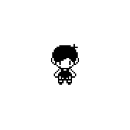Read the passage and choose the correct answer to each of the following questions from 11 to 14
Advertisements are very important in the modem world. Often the T-shirt or jeans show the name of the company that made them. This is a popular form of advertising. A special picture or symbol, called logo, is sometimes used.
You see logos on many different products. The idea of a logo is that whenever you see it, you think of that product or company.
Many people like to buy a product because it is made by a certain company. Some people only buy a product that is made by a famous company. People wear clothes and carry bags that have a famous label to show that they are fashionable and have good taste.
It is very common to see advertisements on TV and hear them on the radio. Most advertisements are only a few seconds long but very attractive. Sometimes, the advertiser uses a slogan because it is easy to say and easy to remember.
The idea of advertisements is to try to make you buy the product. They sometimes show rich and famous people using that product. The message is, if you want to feel rich and famous, then buy this product.
15. A logo is a............... .
A. company's name B. special company C. type of product D. company symbol
16. A popular form of advertising is to............... .
A. wear jeans B. use logo C. watch TV D. use different products
17. A good slogan is............... .
A. easy to remember B. useful to produce C. simple to make D. easy to buy
18. The main purpose of an advertisement is to............... .
A. sell you something you do not want B. make you feel rich and famous
C. make you buy the product D. pay the TV station
Choose the sentence that is closest in meaning to the sentence given in each of the following questions from
19.What a pity ! I can’t do this exercise.
A. I wish I can do this exercise B. I wish I could do this exercise
C. I wish I can’t do this exercise D. I wish I couldn’t do this exercise
20."Where have you been?" the mother asked her daughter.
=> The mother asked her daughter _____________.
A. where had she been B. where she had been
C. where has she been D. where she has been
21.They spent a lot of money on food and clothes.
A. A lot of money on food were spent A lot of money was spent on food and clothes
C. A lot of money were spent on food and clothes Money was spent a lot on food and clothes
22. He suggested that ……… .
A. we should go to the movies B. we go to the movies
C. we went to the movies D. we went seeing the movies
Choose the sentence that is correctly built from the words given in each of the following questions
23.would / holiday / you / like / to the / summer / with / spend / us ?
A. Would you like to spend holiday summer with us?
B. Would you like to spend with us summer holiday ?
C. Would you like to spend summer holiday with us?
D. Would you like spend to summer holiday with us ?
24. now / studies / he / to / every / night / used / he / dance / but.
A. He used to dance every night, but now he studies.
B. Now he used to dance every night, but he studies.
C. He used to studies every night, but now he dance.
D. He studies, but now he used to dance every night.
II. Vocabulary and Grammar. (Choose the best answer)
5.I wish Susan...............harder for her examination.
A. will work B. worked C. has worked D. works
6.. The ‘ao dai’ is the...............dress of Vietnamese women.
A. beautiful B. traditional C. casual D. baggy
7. There are.............different ways to learn English well.
A. much B. many C. more D. any
8. He thinks that ………….on the Internet is a waste of time
A. chat B. chatter C. chatting D. to chat
9. His lecture was so.............that nobody wanted to hear.
A. boring B. bore C. boringly D. bored
10. If you want to improve your English, we......................help you.
A. should B. can be C. can’t D. can
11. Have you ........................gone skiing ?
A. ever B. for C. just D. already
12. Ben writes very quickly . He’s ...........................finished his essay.
A. already B. been C. for D. yet
13. Our friends ......................meet us at the airport tonight.
A. are B. are going to C. will be to D. go to
14. I was born in Scotland but I ..................in England.
A. grew up B. raised C. brought up D. rose
15. I wish I …………get goods grades in my exam .
A. would B. will C. can D. would have
16. Exams are never enjoyable,........................?
A. are there B. aren’t there C. are they D. aren’t they
17. This student is very…………………..There are many mistakes in his test.
A. care B. careless C. careful D. cared
18. He told me he …………………..leave the city the following day.
A. will have to B. has to C. have to D. would have to
19. Don’t worry about Tom and me. We can look after.......
A. myself B. himself C. ourselves D. themselves
20. She hopes she can talk to people……………………the world.
A. through B. on C. from all over D. over all




















